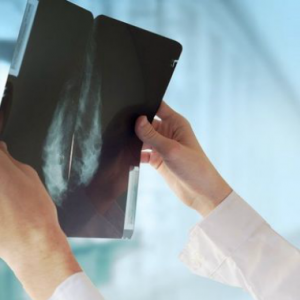
More breast cancer patients can safely forgo chemotherapy: Study – an article from Science Daily.
healthyliving April 9th, 2019
Posted In: cancer care
Tags: breast cancer, cancer, chemo, chemotherapy

Role of magnesium supplementation in the treatment of depression: A randomized clinical trial – an article from Plos One.
Although this journal article does not specifically address magnesium’s role in cancer, I would be remiss if I did not include this article in the May issue.
According to the World Health Organization, 350 million people worldwide suffer from depression, and depression is a leading cause of disability. Many, if not most patients suffering from cancer, experience anxiety and depression. Unfortunately, many of the commonly used antidepressants are often not effective for individuals, and there is even a risk that these drugs can worsen depression, and even cause suicidal ideation.
What is particularly exciting about this study is that magnesium was effective in improving scores in patients who were already using pharmacologic antidepressants. It would be interesting to see a study comparing magnesium to SSRIs, but that study will of course never receive funding.
Cancer patients who are using opiates commonly suffer from constipation, so the use of magnesium citrate can help with constipation and depression/anxiety simultaneously.
Although in this study, the investigators used magnesium chloride, I prefer to use magnesium glycinate for patients without constipation, because of the calming effect of glycine on the CNS. If constipation is an issue, I prefer magnesium citrate.
Keep in mind that in this study, they used 248 mg of elemental magnesium per day. Magnesium citrate contains 16% elemental magnesium and magnesium glycinate contains 14% elemental magnesium, so when you prescribe it, be sure your calculations are correct.
healthyliving March 13th, 2019
Tags: antidepressants, clinical trial, depression, depression treatment, magnesium, magnesium supplement, trial

“Circulating Tumor Cells Predictive of Adjuvant Radiotherapy Benefit in Early Breast Cancer” – an article from Cancer Therapy Advisor can be accessed here.
This article validates what I have been proposing for quite some time; we should be checking for circulating tumor cells (CTCs) in early stage cancer.
In the US, we have a test called CellSearch, to search for CTCs in breast, prostate, and colorectal cancer. This test is FDA approved to help physicians make clinical decisions in patients with metastatic breast, prostate, and colorectal cancer.
We know the greater the number of CTCs, in a patient with metastatic cancer, the worse the prognosis. This study found that approximately 20% of patients with early stage breast cancer had CTCs. This study also showed that more aggressive treatment, adding radiation therapy, in those with CTCs, improved survival.
One of my mantras has always been, “the practice of medicine lags far behind the science of medicine.” This scientific data can and should be applied to the practice immediately. On early stage cancers, we should be checking for CTCs. If we are dealing with breast, colorectal, or prostate cancer, we can use the CellSearch test for those in the U.S. If it is a different type of cancer, we will need to send the patients’ blood outside of the country (such as a lab in Germany), where they test 6 other genetic markers for CTCs. If the patient has early stage cancer and CTCs, in my opinion, the adjuvant or neoadjuvant treatment should be continued until the CTCs are zero.
healthyliving February 7th, 2019
Posted In: cancer care
Tags: breast cancer, cancer, cancer care, radiotherapy, tumor

“Could Diet Adjustment Prevent Aggressive Prostate Cancer?” – an article from Cancer Therapy Advisor can be accessed here.
Comments from Dr. Rosenberg on the article:
Please do not use the ketogenic diet for all cancers! Prostate cancer has a different metabolic phenotype than the classic glycolytic cancers, where the “Warburg effect” applies.
Prostate cancer tends to increase their uptake of amino acids, such as glutamine and arginine, as well as fatty acids. Prostate cancer also increases expression of the enzyme fatty acid synthase, to help synthesize long-chain fatty acids. As I mentioned in prior issues, there is significant data to suggest that statins may inhibit prostate cancer. Because of prostate cancer’s reliance on lipids, the FDG-PET scan is not an ideal imaging study.
So what kind of diet should prostate cancer patients follow? Low fat diet, but keep in mind, that as the cancer progresses and mutates, some of the lesions may become glycolytic, requiring low carbohydrate intake as well.
healthyliving January 10th, 2019
Posted In: cancer care, Cancer Prevention, Healthy Lifestyle
Tags: cancer care, diet, diet adjustment, healthy diet, prevent prostate cancer, prevention, prostate cancer
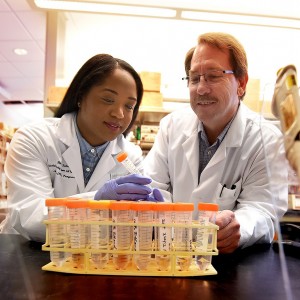
A small, daily dose of Viagra may reduce colorectal cancer risk – an article by ScienceDaily can be accessed here.
Comments from Dr. Rosenberg on the Article:
Over the last decade, researchers have elucidated the roles that impairment of cGMP signaling pathway by PDE5 activity inhibition plays in the regulation of tumor development, and progression.
PDE5 inhibition could be associated with a decreased risk of human cancer development and suppression of tumor progression in several malignancies including those of the lung, prostate, breast and colon. PDE5 inhibitors may also provide an additional anti-tumor immune response in patients affected by myeloma and head and neck squamous cell carcinomas. In addition, a synergistic effect with current chemotherapeutic regimens and monoclonal antibodies has been reported.
Although it likely will not cause harm to use PDE5 inhibitors as both a cancer preventative, as well as an adjunct to existing therapies, some questions need to be answered:
1. Which are the most effective class of PDE5 inhibitors against cancer?
2. Within each class, which drug(s) is the most effective?
3. Optimal dosage?
healthyliving December 20th, 2018
Posted In: cancer care, Cancer Prevention, Healthy Lifestyle
Tags: cancer, cancer prevention, colorectal cancer, prevention, viagra
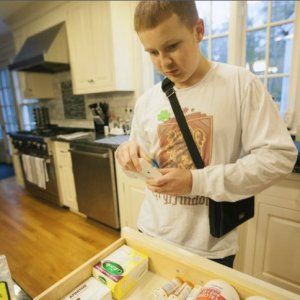
“When Cancer Can’t Be Cured, Low-Dose Chemo Aims To Keep It In Check,” an article from CommonHealth, can be accessed here.
This article is interesting because it notes that an oncologist at Tufts Medical Center uses low dose metronomic chemotherapy. In addition, an oncologist at Mass. General Hospital believes it may potentiate the effectiveness of immunotherapy. And finally, Dr. Schilsky, the director of ASCO, says, “It’s an interesting theory. It’s supported to some extent by laboratory studies.”
Dr. Schilsky also stated “the highest quality trials that have been done so far have generally not proven low-dose chemo to be better than conventional chemo.” As stated in the article, there is no large study, which randomizes standard of care maximum tolerated dose chemotherapy against low dose metronomic chemotherapy.
Unfortunately, it is unlikely that a study like this will ever be done due to lack of funding. What I find extremely interesting is that Dr. Schilsky said that “the highest quality trials that have been done so far have generally not proven low-dose chemo to be better than conventional chemo.” I assume that when Dr. Schilsky uses the term “better,” he means affords the patient longer survival (although it is not clear what he actually means). But even if a trial were to be performed, and low dose chemotherapy did not allow patients to live longer than maximum tolerated dose, is it possible that the improved quality of life from low dose chemotherapy in fact makes it “better?”
healthyliving December 6th, 2018
Posted In: cancer care
Tags: chemo, chemotherapy, low-dose chemo, low-dose chemotherapy
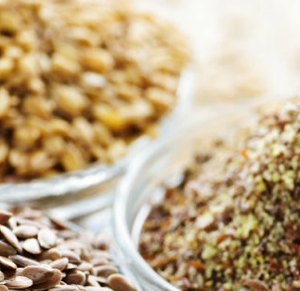
Flaxseed Lignans and Cancer- an article from Cancer Therapy Advisor can be accessed here:
Comments from Dr. Rosenberg on the Article:
Flaxseed has shown to inhibit proliferation of many different types of cancer in in-vitro and animal studies. The mechanisms of action are numerous, to include decreased expression of estrogen receptors, TNF-alpha, MMP-1, VEGF, and IL-6. In addition, repeat biopsies have actually shown a decrease in cancer cell proliferation (as measured by Ki-67) after one month of flaxseed (30 g per day). Although most of the research has been done with breast cancer, flaxseed seems to be effective on many cancers, regardless of estrogen expression.
So why aren’t oncologists recommending cancer patients (or those at high risk) take 30 g of flaxseed per day? Why don’t oncologists make recommendations regarding diet at all? Certainly, there have been any clinical trials on the ketogenic diet and cancer. The problem is that we have minimal to no prospective randomized human data. Even when institutions attempt to perform these trials, the accrual is so poor that the data is not statistically significant.
Having said all of the above, my recommendations for diet in the cancer patient, as I said previously, is a plan-based low glycemic diet. In addition, I believe we should all add 30 g of flaxseed daily.
healthyliving November 19th, 2018
Posted In: cancer care, Nutrition
Tags: cancer diet, flaxseed
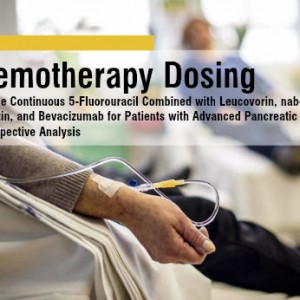
Here is another publication on the use of low dose chemotherapy, but instead of being delivered in a metronomic fashion, one of the chemotherapy drugs was delivered in a continuous fashion. You can read the article on the National Institutes of Health website, by clicking the title below.
As I have previously mentioned, the longer the interval between chemotherapy dosing, the more likely cancer resistance will ensue.
In the current work, 1-year survival was 82%, versus 45% reported for FOLFIRINOX (standard of care), and median overall survival was 19 months, exceeding the 11.1 months for FOLFIRINOX. The authors conclude with the following, “In spite of the depressing statistics resulting from mostly negative trials, oncologists continue to accept the marginal benefits of currently sanctioned therapies for pancreatic cancer…There is no conclusive evidence that these treatment protocols are better than the 5FU-based regimens which were used in the 1980s and 1990s.”
Where and how did the concept of maximum tolerated dose chemotherapy (MTD) arise? MTD protocols were developed initially in the context of treating childhood leukemias and lymphomas; their extended clinical applications to the treatment of solid tumor malignancies were based largely on the therapeutic successes observed in the treatment of Hodgkin’s Disease and childhood ALL.
Therapeutic modeling in solid tumors was largely based on the growth parameters defined by the growth of leukemia cells. The primary therapeutic target in the leukemias/lymphomas is the abnormal cancer stem cell population of the bone marrow/lymph node. This target is more amenable to treatment with cytotoxic drugs that block cell cycle proliferation than are solid tumors, as the propagation of abnormally dividing cells comprises the primary cancer phenotype.
Solid tumor malignancies develop a phenotype that is a product not only of genetically induced cell cycle dysregulation, but also as a consequence of the abnormal microenvironment created by the tumor mass. The net result is a tumor whose proliferative capacity is generally restricted to its outer margins, thereby seriously limiting the potential efficacy of cancer drugs that target dividing cells.
Bottom line: We are still using chemotherapy dosing for solid tumors based on studies and trials treating leukemias/lymphomas, when in fact, these are two entirely different disease processes. It is time for a Wake-UP Call!
healthyliving October 1st, 2018
Posted In: cancer care
Tags: cancer care, chemotherapy, solid tumor, tumor